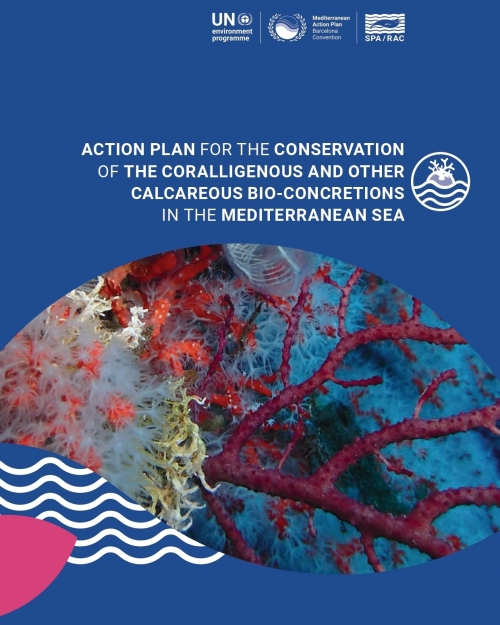Background
Coralligenous concretions are the result of the building activities of various organisms, mainly calcareous algae that grow in dim light conditions, and the physical as well as biological eroding processes. The final result is a very complex structure composed of several microhabitats. This great environmental heterogeneity allows several different assemblages to coexist in a reduced space.
The coralligenous concretions include up to 1700 species identified, among them 1300 algae, 1200 invertebrate species, and more than 100 fish species. However, these figures are far from providing us a general view of biodiversity dwelling in the coralligenous assemblages. The coralligenous ecosystem was subject to limited spatiotemporal studies.
The available studies, however, show that this ecosystem is directly threatened by human activities such as trawling, invasive species and climate change. The Contracting Parties to the Barcelona Convention adopted the Action Plan on coralligenous & other calcareous bio-concretions in 2008 to conserve these vulnerable key habitats.
Objectives
The Action Plan objectives are:
- To conserve the coralligenous and others calcareous bio-concretions in the Mediterranean Sea
- To enhance scientific cooperation
- To improve the knowledge on these assemblages
Recommendations
The Action Plan identifies several recommendations related to the following themes:
- Data collection and inventories
- Monitoring activities
- Research activities
- Conservation activities
- Regional coordination
Updates
The Action Plan was updated in 2016
Events
- 1st Mediterranean Symposium on the Conservation of the Coralligenous and other calcareous bio-concretions (Tabarka, 15 – 16 January 2009)
- 2nd Mediterranean Symposium on the Conservation of the Coralligenous and other calcareous bio-concretions (Portorož, Slovenia, 29-30 October 2014)
Media
.jpg)

